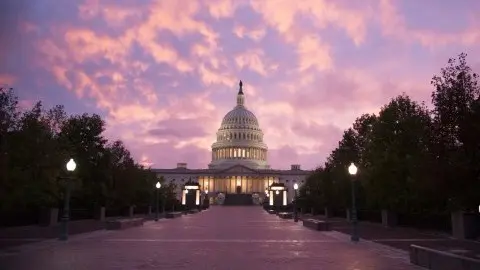India: Complete lockdown to break Covid-19
The three-week nationwide lockdown will significantly dent India’s GDP growth, making this an even worse year for the economy than the 2008 Global financial crisis. This demands a stronger policy response. Until then, the looming economic misery is poised to push USD/INR above 80 in the coming days
Breaking the Covid-19 chain
Prime Minister Narendra Modi has announced the complete lockdown of the country for three weeks to break the Covid-19 transmission cycle as confirmed infections crossed the 500 mark. Starting today, 25 March, the lockdown imposes a total ban on all non-essential businesses and prevents people from stepping out of homes, with anyone flouting rules facing fines and even jail. The government also has allocated $2 billion for the healthcare sector in this emergency.
This follows lockdowns in a number of Indian states already underway, while the authorities have also restricted international arrivals into the country and suspended domestic air and other modes of transport.
The economic impact
The Prime Minister warned the crisis risked pushing the country 21 years backwards if people failed to comply with the restrictions during the lockdown.
Just as everywhere else in the world, the Indian economy is bracing for the fallout of this unprecedented event. We expect the lockdown to dramatically reduce GDP in the current and subsequent quarters, while there will be prolonged economic gloom throughout the rest of the year.
If we are not able to manage this pandemic in the next 21 days, the country and your family will be setback by 21 years. – Prime Minister Narendra Modi
The biggest whammy will be to private consumption, which accounts for 57% of India's GDP. With all non-essential consumption dropping virtually to zero for a week in the current quarter means year-on-year GDP growth plunges to just about 1%, and with two weeks of a hit in the next quarter could push it to about -5%. We would anticipate at least one more quarter of drag keeping growth in negative territory, beyond which the policy support and favourable base effects should drive recovery back to positive growth.
While this shaves a full percentage point from the yearly growth in the current fiscal year (ends on 31 March 2020) to our estimated 4.0%, we have revised our forecast for the next financial year to 0.5% from 4.8%. This is a far cry from the government’s expectation of over 6% growth outlined in the FY2020-21 budget, which will surely be scaled back significantly as the Finance Ministry prepares fresh stimulus to stem the crisis. However, citing significant policy support, the official growth outlook may not be as bearish as ours, though we note that official growth tends to be overestimated by about 2%.
Real GDP growth (% year-on-year, quarterly data)

More policy support on the way
Finance Minister, Nirmala Sitharaman, has announced a series of support measures, though these only included waivers and relaxations of tax and bankruptcy codes, no material stimulus which still seems to be in the making. The talk on the street is of about $20 billion (1% of GDP) stimulus. But given the enormity of the crisis, it could be bigger than that.
This also raises the chance of the Reserve Bank of India cutting its policy rates by more than our 50bp forecast at the meeting next week (3 April). The lockdown will be associated with a significant drying of financial system liquidity in coming weeks. However, the RBI has been pumping cash into the system through repo auctions and will be prepared to do more to support any surge in liquidity demand post-lockdown.
Market pricing for the worst
Markets are pricing in a massive economic impact of this health crisis. The BSE Sensex suffered its steepest-ever single-day plunge by 13% on Monday, a day after a nationwide lockdown on Sunday. It recovered on Tuesday. But this new and longer lockdown will likely push it deeper into negative territory today. The stock market remains open for trading during the lockdown.
Government bond yields remain under upward pressure with the 10-year bond up now 30bp to yield 6.3% from over a decade low hit earlier this month. And, the Indian rupee (INR) continues on a steady depreciation path, trading above 76 against the US dollar. We see no end to these market trends until we have signs of Covid-19 coming under control.
For now, we see the USD/INR rate trading past 80 USD within days.
Markets - one way down

This publication has been prepared by ING solely for information purposes irrespective of a particular user's means, financial situation or investment objectives. The information does not constitute investment recommendation, and nor is it investment, legal or tax advice or an offer or solicitation to purchase or sell any financial instrument. Read more
Download
Download article
25 March 2020
Covid-19 crisis: What you need to know This bundle contains 14 Articles